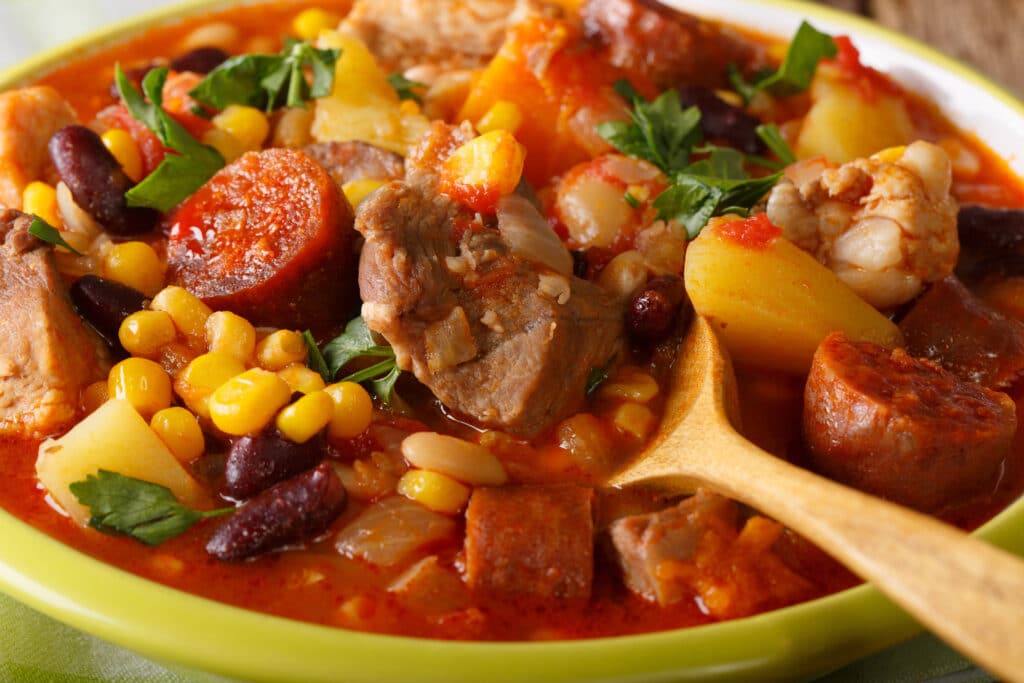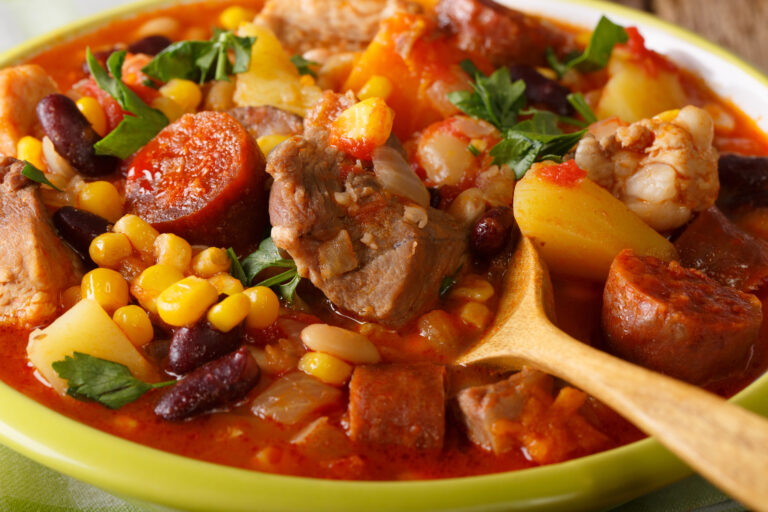
Cachupa, the national dish of Cape Verde, located in the Atlantic Ocean, is a hearty stew made with corn, beans, vegetables, and meat or fish. This dish mirrors the history and influences of the Cape Verde islands. Originating from these West African islands, cachupa showcases the blending of African, Portuguese, and Brazilian flavors into a unique culinary experience that also includes American influences.
Our team at Remitly created this guide as part of our series that celebrates the traditional dishes of our global customers.
The History of Cachupa: Cape Verde’s National Dish
Cachupa has a long and captivating history that reflects the cultural influences of Cape Verde. From the times of slavery, when slaves had limited food supplies, cachupa was born. They combined available ingredients like corn, beans, and vegetables to create a comforting bean stew.
Over time, with the introduction of bay leaves, chorizo, and olive oil, especially during the Portuguese occupation in the 15th century, cachupa evolved.
Today, it’s a staple enjoyed by all in Cape Verde, often highlighted during special events like weddings and family gatherings.
Traditional Ingredients in Cachupa: Corn, Beans, and Meat
The foundation of cachupa is hominy, with the addition of red beans, onions, tomatoes, and peppers creating its rich base.
Cape Verdean food diversifies the meats in cachupa – beef, pork, and chicken are popular, but in coastal areas like Santo Antão and Santiago, seafood, especially mussels and mackerel, play a significant role.
Portuguese influences brought sausages and bacon into the mix, while vegetables such as sweet potatoes, cassava (or mandioca), and kale add depth and nutrition.
Slow-Cooked to Perfection: Cachupa’s Flavorful Process
Cachupa is slow-cooked, allowing ingredients like black pepper and sugar cane to infuse their flavors over several hours. The outcome? A rich stew often paired with arroz (rice) or bread.
Leftovers, even more flavorful, become breakfast, sometimes topped with a fried egg.
Recipe: Traditional Cachupa
Ingredients:
- 1 cup of hominy (corn)
- 1 cup of red beans
- 1 onion, chopped
- 2 tomatoes, diced
- 1 bell pepper, diced
- 1 pound of meat (beef, pork, or chicken), diced
- 4 sausages, like linguiça, sliced
- 4 slices of bacon, chopped
- 2 sweet potatoes, peeled and diced
- 1 cassava (mandioca), peeled and diced
- 1 bunch of kale, chopped
- Salt and pepper to taste
- Olive oil and water
Instructions:
- In a large pot, soak the hominy and red beans overnight in water. Drain and rinse before cooking.
- In the same pot, add the hominy, red beans, chopped onion, diced tomatoes, and bell pepper. Cover with water and bring to a boil.
- Reduce the heat to low and simmer for about 1 hour, or until the hominy and beans are tender.
- In a separate pan, cook the diced meat until browned. Add the sliced sausages and chopped bacon, and cook until they release their flavors.
- Add the cooked meat, sausages, and bacon to the pot with the hominy and beans. Stir well to combine.
- Add the diced sweet potatoes and cassava to the pot. Cover and simmer for another 30 minutes, or until the vegetables are cooked through.
- Finally, add the chopped kale to the pot and cook for an additional 5 minutes, until wilted.
- Season with salt and pepper to taste.
- Serve hot with bread or rice on the side.
Learn More About Cape Verdean Cuisine
Beyond cachupa, Cape Verde, or Cabo Verde, has a rich culinary repertoire. Dive into delicacies like:
- Lagosta Grelhada: A testament to the island’s fresh seafood offerings.
- Cuscuz: A dessert made from cornmeal, coconut, and sugar.
- Pastel com Djagacida: A savory delight filled with beef and spices.
- Catchupa Rica: A twist on cachupa, infused with veggies like papaya and buoyed with pudim for a sweet finish.
Cape Verde islands, a fusion of African, Portuguese, Brazilian, and American influences, offer diverse, hearty, and delicious foods. Whether it’s seafood from Fogo or veggies from Santo Antão, there’s something to sate every palate.
Visit the homepage, download our app, or check out our Help Center to get started.
